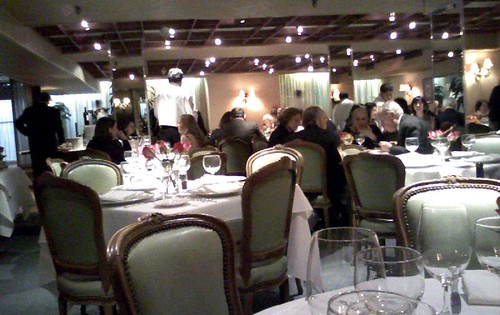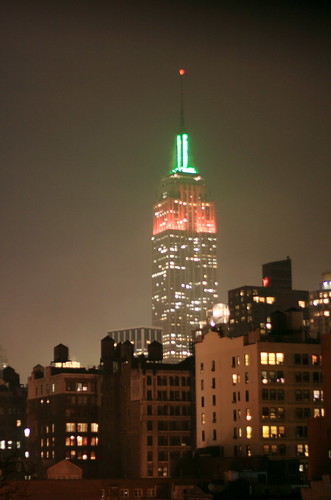Arabian Holidays - An Introduction
by David Price
The Middle East has become one of the most exciting tropical holiday destinations during the recent decades. Holidays to the Middle East are exciting because the geographical area called the Middle East combines the age-old civilization with the most modern of cities. It boasts some of the greatest modern structures like the Burj al Arab. This part of the earth has a rich historical as well as mythological background. This article aims to review the major holiday destinations in the Middle East.
Photo by twocentsworth
Major Middle East Holiday DestinationsThe major Middle East holiday destinations include Oman, Qatar, Dubai, Abu Dhabi etc. All of these places have excellent infrastructure for visitors to make the most of their holidays there. If you are planning a holiday to the Middle East, you can go through the following review to learn what each of these astonishing places offers.The major Middle East holiday destinations include Oman, Qatar, Dubai, Abu Dhabi etc. All of these places have excellent infrastructure for visitors to make the most of their holidays there. If you are planning a holiday to the Middle East, you can go through the following review to learn what each of these astonishing places offers.
 Oman
OmanOman, the most traditional country of the United Arab Emirates, offers everything from rugged coasts, to the peak of Jebel Akhdar at 2980m, to the salt flats and deserts. If you go to Oman, the beautiful and varied terrain of the country will amaze you. Here you will meet an Orient that has a vibrant fusion of cultures taken from India, Africa and the ancient Orient. If you are in Oman, do not miss a tour to the capital Muscat, which is rich in gold and silverware, Bedouin rugs and antiques.
Photo by By: Andries3
If you want water fun, you can have it in the north of the country where lies the dazzling beaches of the Batinah coast.Oman, the most traditional country of the United Arab Emirates, offers everything from rugged coasts, to the peak of Jebel Akhdar at 2980m, to the salt flats and deserts. If you go to Oman, the beautiful and varied terrain of the country will amaze you. Here you will meet an Orient that has a vibrant fusion of cultures taken from India, Africa and the ancient Orient. If you are in Oman, do not miss a tour to the capital Muscat, which is rich in gold and silverware, Bedouin rugs and antiques. If you want water fun, you can have it in the north of the country where lies the dazzling beaches of the Batinah coast.
 Qatar
QatarQatar is another destination for a typical Arabian holiday. The country combines the charms of old Arabia with exciting modernity. If you visit the country, you will get a fantastic travel experience. Here you will be able to visit the historic forts, expansive desert landscapes, and beach resorts. In Qatar you will also meet a rich, cultural heritage. There are some finest hotels and the world-class shopping centers for the visitors.
Photo by Shenghung Lin The capital of Qatar is Doha, which has some interesting places like the city museums
and the Doha Fort.Qatar is another destination for a typical Arabian holiday. The country combines the charms of old Arabia with exciting modernity. If you visit the country, you will get a fantastic travel experience. Here you will be able to visit the historic forts, expansive desert landscapes, and beach resorts. In Qatar you will also meet a rich, cultural heritage. There are some finest hotels and the world-class shopping centers for the visitors. The capital of Qatar is Doha, which has some interesting places like the city museums and the Doha Fort.
DubaiDuring the recent years Dubai has become the most popular holiday destination in the Middle East. Almost everybody knows about the country’s finest hotels. Apart from this there are also amazing shopping opportunities in Dubai. There are plenty of water funs in Dubai. So, experience Dubai with its beautiful beaches, friendly people and markets. During the recent years Dubai has become the most popular holiday destination in the Middle East.
Photo by Wintersun24/7 Almost everybody knows about the country’s finest hotels. Apart from this there are also amazing shopping opportunities in Dubai. There are plenty of water funs in Dubai. So, experience Dubai with its beautiful beaches, friendly people and markets.
Abu DhabiAbu Dhabi is another wonderful place for your holidays and vacations in the Middle East. Abu Dhabi is one of the most visited tourist destinations in the Middle East. Thousands of visitors flock Abu Dhabi each year round from all parts of globe. Abu Dhabi offers large gardens and parks, green boulevards lining all the streets and roads, and sophisticated high-rise buildings.
Photo by: Jon RawlinsonYou can also enjoy tranquil beaches, oasis, and sunny weather in Abu Dhabi. So, come to Abu Dhabi anytime of the year and experience the charm of this magical city. Thus, plan your holidays to the Middle East anytime of the year and experience the magical charm of this part of the world. The holiday packages to the Middle East are available throughout the year. There are many travel agencies who organize the holiday packages. You can select your own Middle East holiday packages according to your time and budget.
 Wow, what an exciting first three months! The whole concept for West Africa Discovery has been thought of for some time, but 2009 has been a landmark year for us; the year that all the ideas and concepts have become a physical and online reality. It hasn’t always been easy, but it’s never been a chore. Things don’t always run smoothly when starting up a business from scratch, especially when everything is run on a tight budget. However, over the last three months the team have surpassed obstacles, solved mind-boggling problems and have come up with some great ideas to smooth everything out to a point where we feel comfortable running a platform in a successful way for our clients and customers; where we can offer the best of the Responsible Tourism projects based in West Africa.
Wow, what an exciting first three months! The whole concept for West Africa Discovery has been thought of for some time, but 2009 has been a landmark year for us; the year that all the ideas and concepts have become a physical and online reality. It hasn’t always been easy, but it’s never been a chore. Things don’t always run smoothly when starting up a business from scratch, especially when everything is run on a tight budget. However, over the last three months the team have surpassed obstacles, solved mind-boggling problems and have come up with some great ideas to smooth everything out to a point where we feel comfortable running a platform in a successful way for our clients and customers; where we can offer the best of the Responsible Tourism projects based in West Africa. 







































